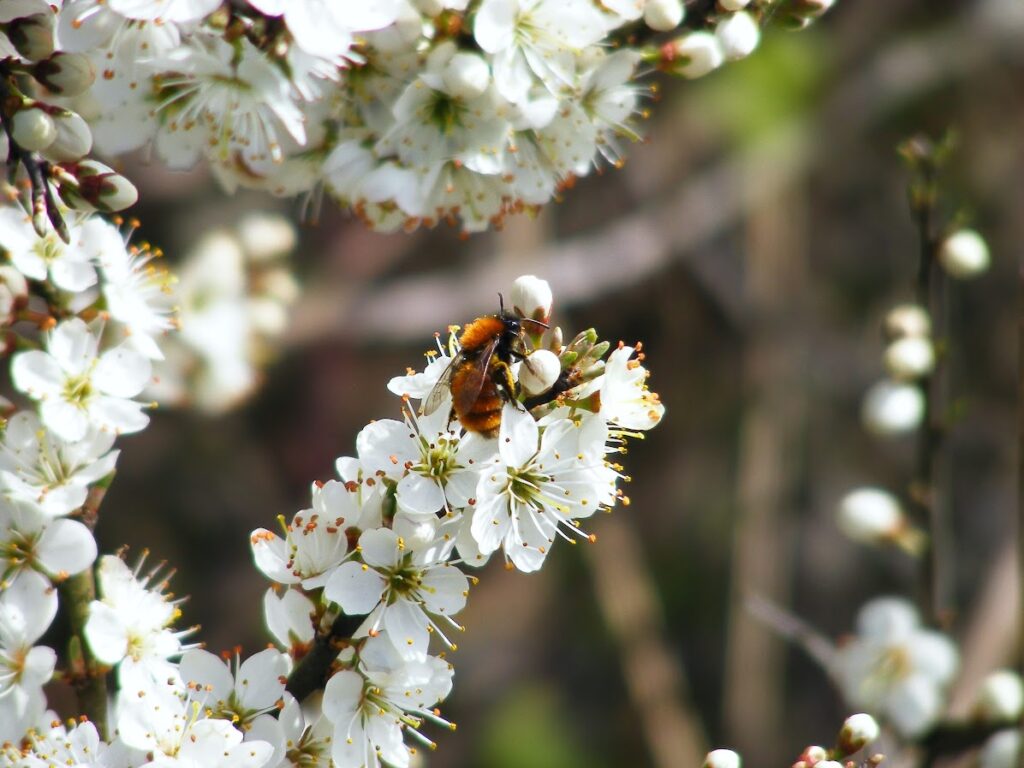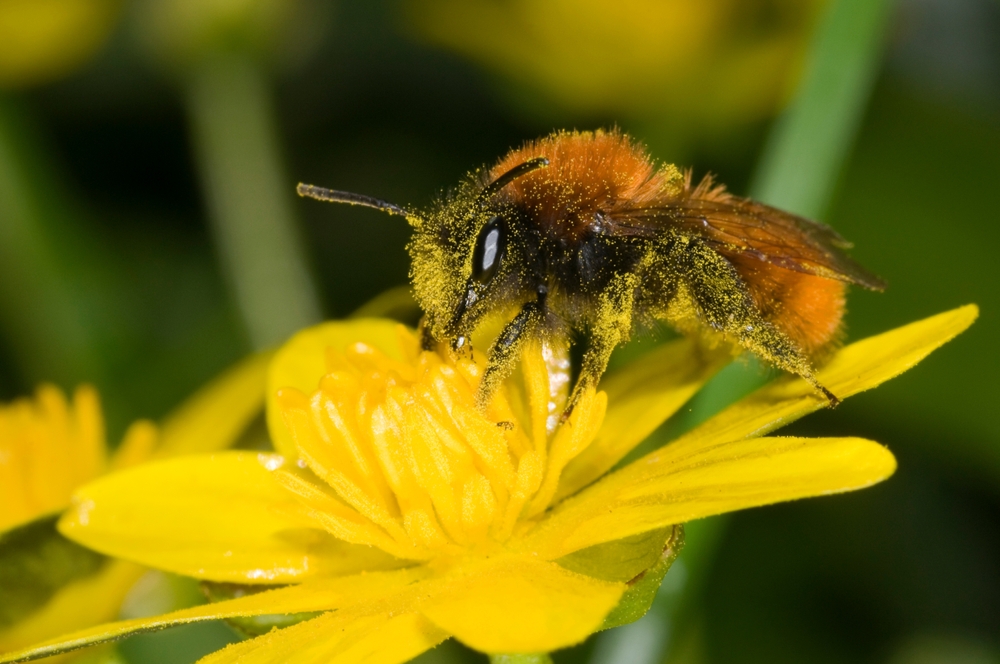The commonly found tawny mining bee doesn’t sting, isn’t aggressive, and in a world of wildlife doom is a tiny success story, says wildlife writer Jane Adams

Imagine a tiny fox digging in your lawn … and when I say tiny, I mean really, really tiny. Imagine it has a thick gingery coat and a sooty-black face and legs. And, as it digs vertically down into your closely cropped grass, it leaves an equally small volcano of soil behind, with a neat hole down the middle.
Over the coming days, imagine more and more of these eruptions appearing, until eventually your lawn looks like a miniature assault course.
That’s how my lawn looks each spring – and I couldn’t be happier. Initially, I thought the mini-Vesuviuses were just common worm casts. It wasn’t until a foxy-coloured insect flew past, quartered back, and promptly vanished down one of the holes, that I realised.

Tiny warrens
These easily-overlooked insects are tawny mining bees – and they are one of the more then 250 species of wild solitary bees living in the UK.
Despite being the size of a honeybee, they don’t sting and they are not aggressive. They’re also common and widespread – something to celebrate in our seriously nature-depleted world. The female tawny loves gardens, often making her nests in lawns and flowerbeds. Each nest will have several tunnels, with individual chambers where she carefully lays an egg and stocks up with pollen and nectar (for when the egg hatches). Sadly, within a few short weeks, once her work is complete, the adult tawny will die. She will never meet her offspring, who develop slowly and hatch the following spring. If you’re thinking of mowing soon and don’t want to harm your lawn-loving miners, just increase the cutting depth of your mower for a week or two. Even better, make yourself a cuppa and watch as these bees collect pollen on their legs and deposit it in their nests over and over again. And if your neighbour asks what you’re doing on your hands and knees peering into the grass, just smile and tell them you’re watching foxes. The tiny, tiny precious foxes living under your lawn.
Tawny mining bee facts
Latin name: Andrena fulva. Fulva comes from the Latin for tawny, the colour of their foxy coat.
Females might be spotted in the morning, sunbathing next to their nests as they warm up before flying to collect pollen and nectar.
Most likely to be seen from mid to late March through to June.
Unlike bumblebees and honeybees, solitary bees mostly nest alone.
They play an important role as pollinators of fruit trees such as apples and pears, but can also be found on hawthorn, garden plants, blackthorn, dandelion, buttercups and willows.
More information: bumblebeeconservation.org/tawnyminingbee/

